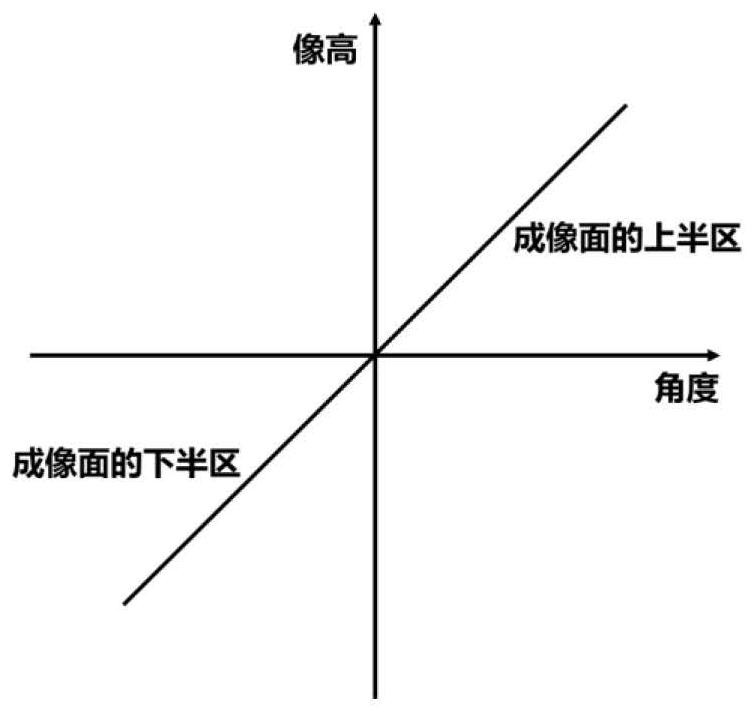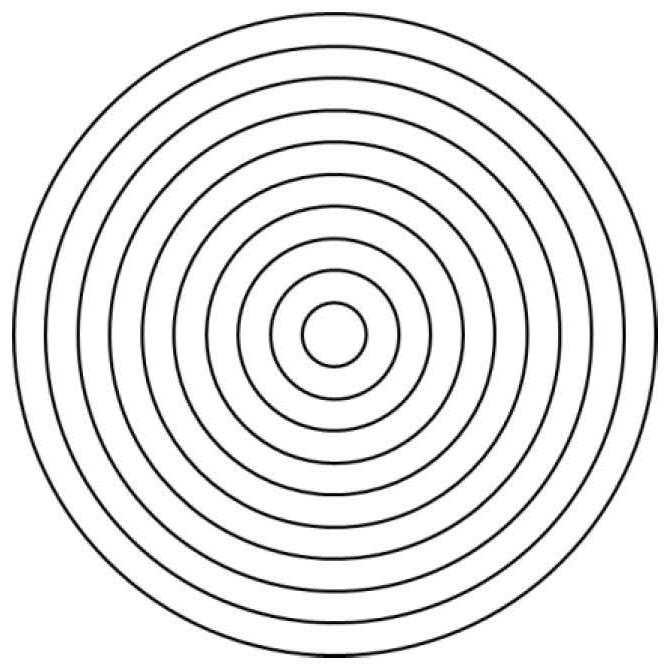Lens group, camera module, and imaging system
A camera module and imaging system technology, which is applied in the field of optical lenses, can solve problems such as lack of correction capabilities, and achieve the effects of improving effective recognition, avoiding collisions, and improving reliability
- Summary
- Abstract
- Description
- Claims
- Application Information
AI Technical Summary
Problems solved by technology
Method used
Image
Examples
Embodiment 1
[0078] The following reference Figure 5A to Figure 6B The camera module 100 according to Embodiment 1 of the present application will be described.
[0079] The camera module 100 may include a lens group 110 having one or more lenses. The lens group 110 may include free-form lenses with non-rotationally symmetrical mirror surfaces. By adjusting the structure and optical parameters of the free-form surface lens, the camera module 100 has the following characteristics: Figure 5A The image shown is the high angle curve.
[0080] The imaging area of the camera module 100 is as Figure 5B shown. The imaging area is divided into imaging area I and imaging area II. The imaging area I and the imaging area II are sequentially distributed in a first direction perpendicular to the optical axis of the lens group 110 . In the imaging area I, the slope of the high-angle curve of the image decreases, and the image is reduced; while in the imaging area II, the slope of the high-angl...
Embodiment 2
[0089] Refer to the following Figure 7A with Figure 7B A camera module 100 according to Embodiment 2 of the present application will be described. In this embodiment and the following embodiments, for the sake of brevity, descriptions similar to those in Embodiment 1 will be omitted.
[0090] The camera module 100 may include a lens group 110 having one or more lenses. The lens group 110 may include free-form lenses with non-rotationally symmetrical mirror surfaces. By adjusting the structure and optical parameters of the free-form surface lens, the camera module 100 has the following characteristics: Figure 7A The image shown is the high angle curve.
[0091] The imaging area of the camera module 100 is as Figure 7B shown. The imaging area is divided into imaging area I, imaging area II and imaging area III. In the imaging area I, the slope of the image high-angle curve decreases, and the image is reduced; in the imaging area II, the slope of the image high-angle...
Embodiment 3
[0096] The following reference Figure 8A with Figure 8B A camera module 100 according to Embodiment 3 of the present application will be described.
[0097] The camera module 100 may include a lens group 110 having one or more lenses. The lens group 110 may include free-form lenses with non-rotationally symmetrical mirror surfaces. By adjusting the structure and optical parameters of the free-form surface lens, the camera module 100 has the following characteristics: Figure 8A The image shown is the high angle curve.
[0098] The imaging area of the camera module 100 is as Figure 8B shown. The imaging area is divided into imaging area I, imaging area II and imaging area III. In imaging area I, the slope of the image height angle curve increases, and the image is enlarged; in imaging area II, the slope of the image height angle curve decreases, and the image is reduced; while in imaging area III, the slope of the image height angle curve increases, and the image is ...
PUM
 Login to View More
Login to View More Abstract
Description
Claims
Application Information
 Login to View More
Login to View More - Generate Ideas
- Intellectual Property
- Life Sciences
- Materials
- Tech Scout
- Unparalleled Data Quality
- Higher Quality Content
- 60% Fewer Hallucinations
Browse by: Latest US Patents, China's latest patents, Technical Efficacy Thesaurus, Application Domain, Technology Topic, Popular Technical Reports.
© 2025 PatSnap. All rights reserved.Legal|Privacy policy|Modern Slavery Act Transparency Statement|Sitemap|About US| Contact US: help@patsnap.com



